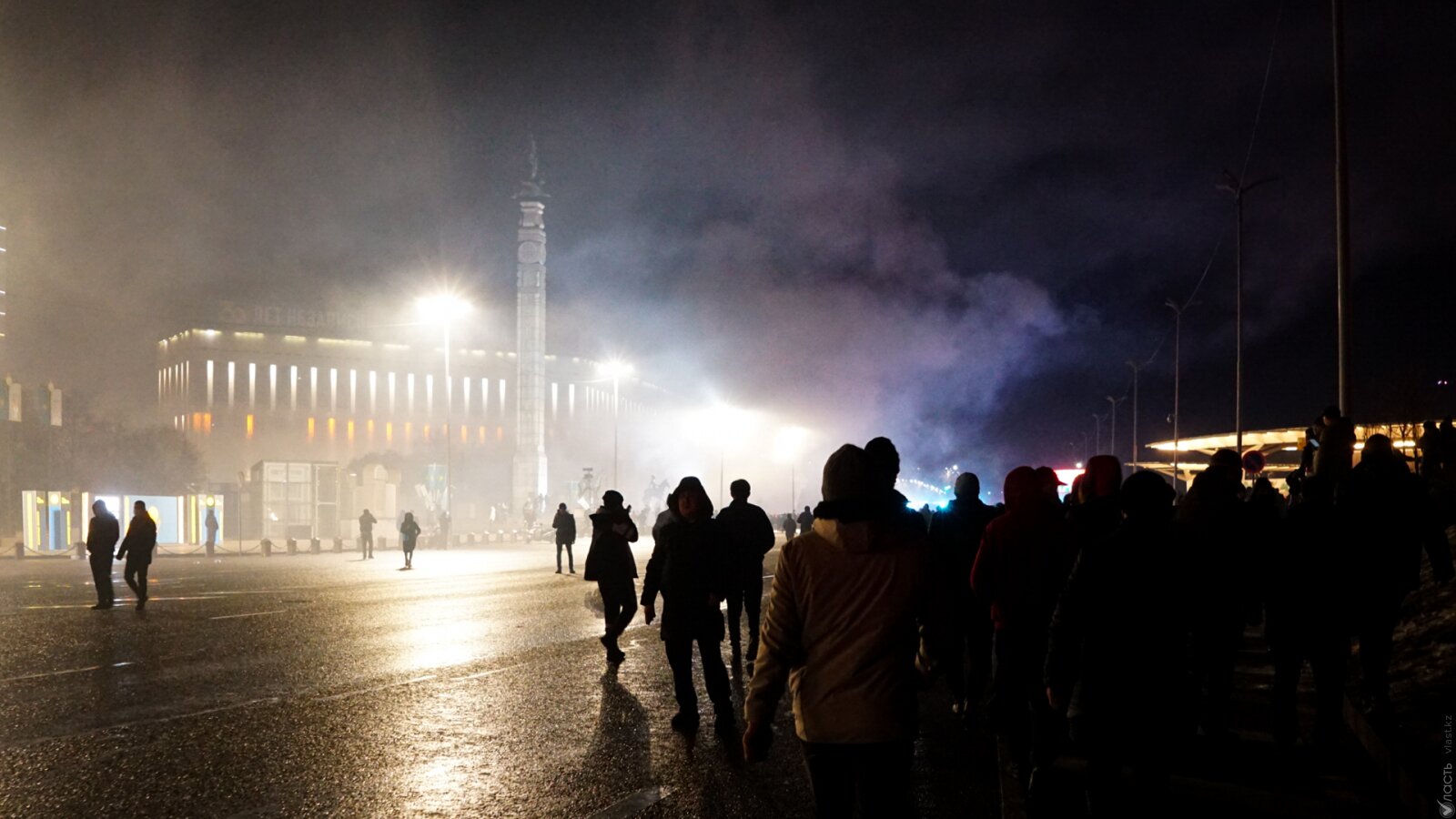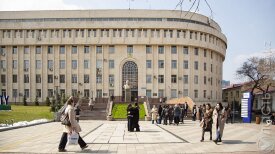State propaganda uses footage of burned buildings, overturned cars, and looted shops to impose a sense of insecurity onto society. We are led to believe that if we lose the “statehood” - created by the autocrat - we would instantly become victims of an “unruly mob.” This is a strategy that the police and the government use when they are losing their grip on power.
When nationwide protests sparked in January 2022, and then escalated into clashes with law enforcement, President Kassym-Jomart Tokayev branded the protesters as “terrorists,” police departments talked about officers being beheaded and about “a mob of bandits beating the military and raping women.”
Only after the protests were suppressed, the president differentiated among “peaceful protesters,” “young hooligans,” and “terrorists.” During his long speeches about the “lessons of those days” he only mentioned that the protests emerged from socio-economic discontent in passing. A year later, the authorities still argue that “everything was pre-planned.”
When the emphasis shifts to the dangers of losing the state power, however, one thing is not clear: Where does that power reside? Is it the elite’s or the people’s?
Tokayev argues that the participants in the January Events should not be glorified, that the people “came to the squares with slogans that have nothing to do with patriotism.” Instead of a fair and transparent investigation, the president announces an amnesty, which, according to him, is “an act of forgiveness and humanism” towards the rioters. In fact, it is a way to pin a criminal stigma on them.
According to the Constitution, the people of Kazakhstan are “the only source of state power.” Yet, this framing of the January Events deprives us of the right to use this power to create and to change. They are trying to convince us that without Tokayev’s goodwill and the heroic feat of the police, our society would have plunged into chaos; That we are incapable of defending ourselves and constructively using our power to self-govern. By accepting this narrative, all that is left for us is to be ruled. And our protests cannot be genuine, since they would always be labeled as either orchestrated through political games or sheer outbursts of violence.
But the January Events were not riots. They were acts of mutual assistance and solidarity. When the police disappeared, the people in the Almaty region took it upon themselves to patrol the streets. In the west of the country, people organized food and shelter for the protesters. In Almaty, protesters were given water, bread, and first aid. The wounded, be them civilians or police, were saved and sheltered.
Whenever the state was absent or inefficient, Kazakhstanis helped each other. It happened during droughts, after an explosion in the southern town of Arys in 2019, during a heating system failure in the northern city of Ekibastuz last December.
Former President Nursultan Nazarbayev deliberately built a depoliticized polity, based on the formula “first the economy, then politics.” In one of his first speeches after the events that became known as Qandy Qantar, Tokayev criticized this formula. Yet, his emphasis on “law and order” tells us that the logic remains the same.
From Akorda, his presidential palace in Astana, Tokayev is now asking citizens to worry only about their private lives and avoid claiming their collective rights to create something new that would threaten the existing power structure. People are only allowed to be accomplices in this exercise of imitative democracy.
Qandy Qantar is not just a tragedy. It is a demonstration that the people are ready to create something new. The events of last year mark the highest point of solidarity for the people of Kazakhstan. Despite years of depoliticization, inequality, poverty, and repression, they were ready to take to the streets and claim their rights.
That the protests began in the town of Zhanaozen is no coincidence. That is a hotspot of struggle. And for the Kazakhstanis who came out to protest in solidarity, the country’s symbol was Zhanaozen, not Akorda.
Поддержите журналистику, которой доверяют.








